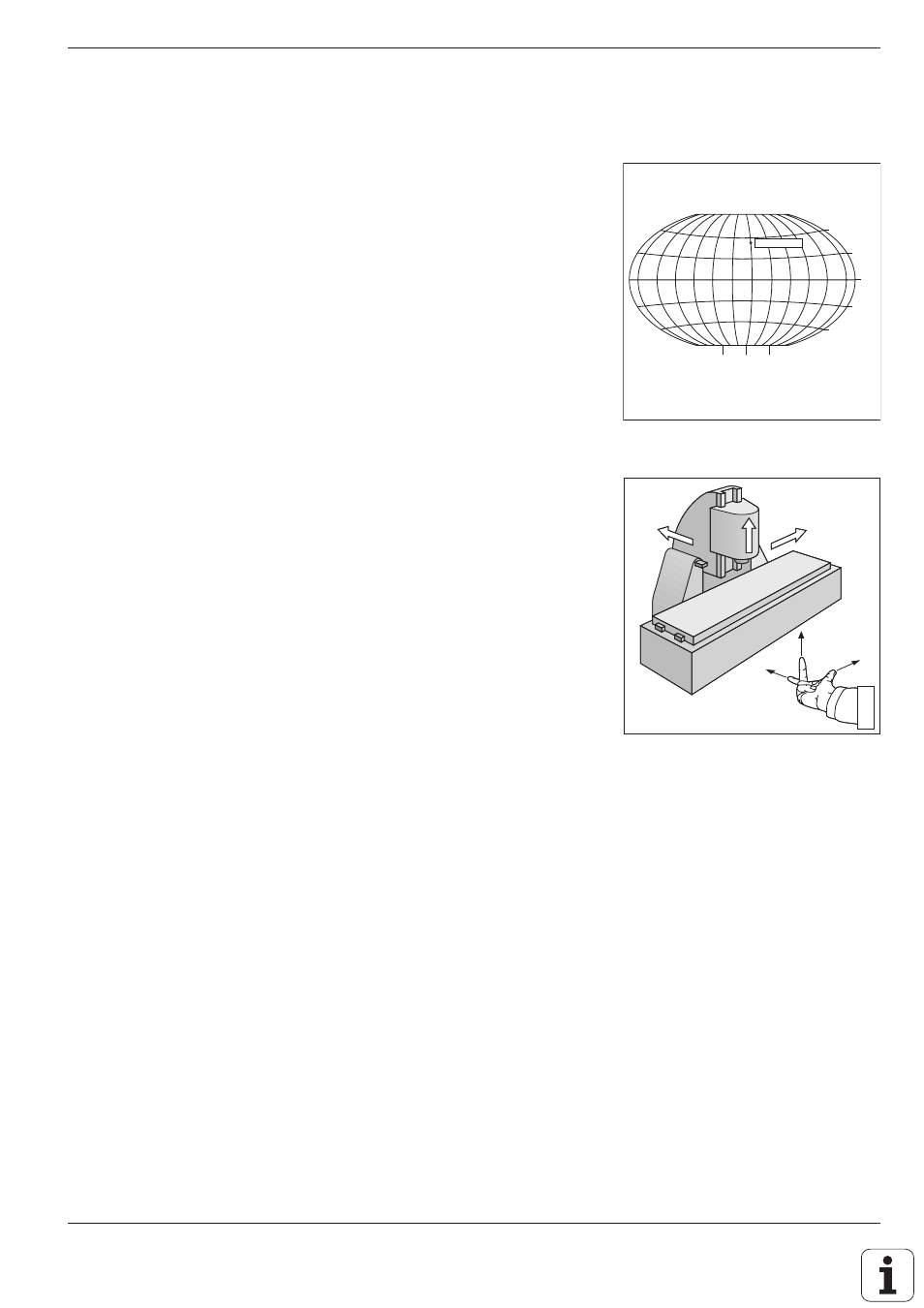Reference system, Cartesian coordinate system – HEIDENHAIN TNC 407 (280 580) ISO Programming User Manual
Page 29

TNC 426/TNC 425/TNC 415 B/TNC 407
1-11
1
Introduction
Reference system
In order to define positions, a reference system is necessary. For
example, positions on the earth's surface can be defined “absolutely” by
their geographic coordinates of longitude and latitude. The word
coordinate comes from the Latin word for “that which is arranged.” The
network of horizontal and vertical lines around the globe constitute an
absolute reference system — in contrast to the relative definition of a
position that is referenced to a known location.
Cartesian coordinate system
On a TNC-controlled milling machine, workpieces are normally machined
according to a workpiece-based Cartesian coordinate system (a
rectangular coordinate system named after the French mathematician
and philosopher Renatus Cartesius, who lived from 1596 to 1650). The
Cartesian coordinate system is based on three coordinate axes X, Y and Z
which are parallel to the machine guideways.
The figure to the right illustrates the “right-hand rule” for remembering the
three axis directions: the middle finger is pointing in the positive direction
of the tool axis from the workpiece toward the tool (the Z axis), the thumb
is pointing in the positive X direction, and the index finger in the positive Y
direction.
Fig. 1.9:
Designations and directions of the
axes on a milling machine
Fig. 1.8:
The geographic coordinate system
is an absolute reference system
0
°
90
°
90
°
0
°
30
°
30
°
60
°
60
°
Greenwich
+X
+Y
+Z
+X
+Z
+Y
